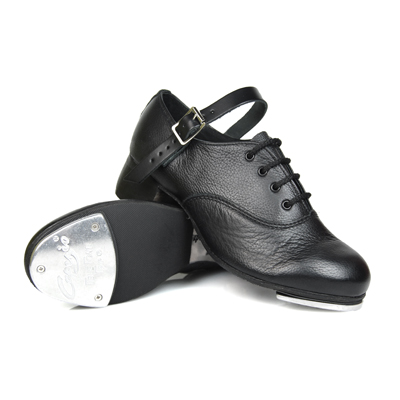Hey
there Readers,
This
post is going to take a further look into the foot wear the dancers wear while
performing in Riverdance. These shoes are unique in both the material from
which they are made and way they are constructed so that they produce the signature
sound that the dancers strive to achieve from their feet. Most of these special
shoes are still handmade to this day in order to attain the perfect precision of
fit and sound. The shoes were, and some continue to be, made of calf leather
and metal nails. There are an increased flattened toe box and a metal heel for
the intensifying click. Some important aspects of the shoes include the
flexibility, durability and support.
There are also two types of shoes. The hard shoes or
‘jig shoes’ which are best described to be the dancing shoe of Riverdance and
the soft shoe which are called the ‘Ghillies or reel shoes or pumps.’ The soft
shoe is a more form fitting shoe. The sole is much more flexible. Just the way
Lauren had quickly described it earlier in one of our blog posts! The hard shoe
is the more common one that we have described in the beginning of the post.
Wide heel and toe box that produce a loud click and tick with each step and
movement. The material has changed just a tad. There is less metal and more
fiberglass material. What is very interesting is that there is no multiple type
of hard toes shoes. They come in squared and rounded toed.
The
heel of the shoe is about two inches high! And when I mentioned that the toe
box was flattened that is because some shoes have a fiberglass toe box which
offers more support while the dancers perform the toe stances and jumps.
However,
these shoes are handmade and customized for each dancer. Keep in mind these shoes take a very long time to “break in.”
Some research even states that when the dancer is maintaining and breaking
their own shoes in, the shoes look like they had been run over by a truck. Wow,
it is incredible how precise shoe wear can be. The shoes cannot be to lose or
the foot of the dancer would not have enough support. However, the shoe cannot
be too stiff or the dancer would not have enough flexibility while completing
the performance. Dancers also travel
with multiple pairs of shoes!
On the left below is a picture
of what a hard shoe would look like.
On the right is an example of the soft shoe.
"Show Guide for
Riverdance." — Popejoy Presents. Web. 15 Apr.
2015. <http://popejoypresents.com/performance-guides/show-guide-for-riverdance>.
VanderWerf, Pamela.
"The Different Riverdance Shoes." EHow. Demand Media, 20 Mar. 2013. Web. 15 Apr. 2015.
<http://www.ehow.com/info_12264166_different-riverdance-shoes.html>.
"Irish Dancing Shoes
- Buy Irish Dancing Shoes on Line from Ireland." Irish
Dancing Shoes - Buy Irish Dancing Shoes on Line from Ireland. Web. 15 Apr. 2015. <http://www.fays-shoes.com/>.
-Shannon B

No comments:
Post a Comment